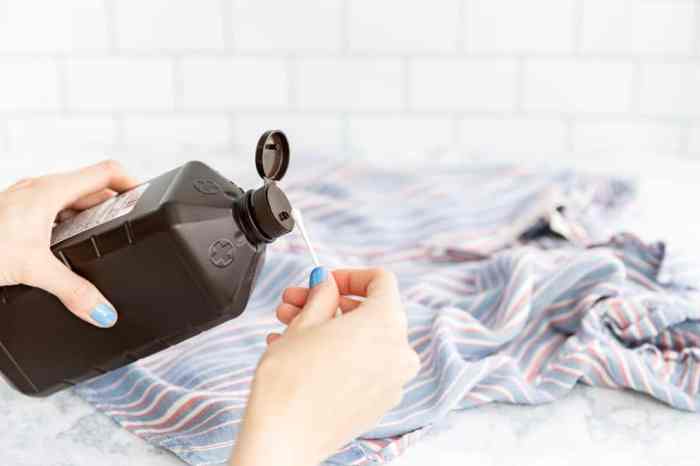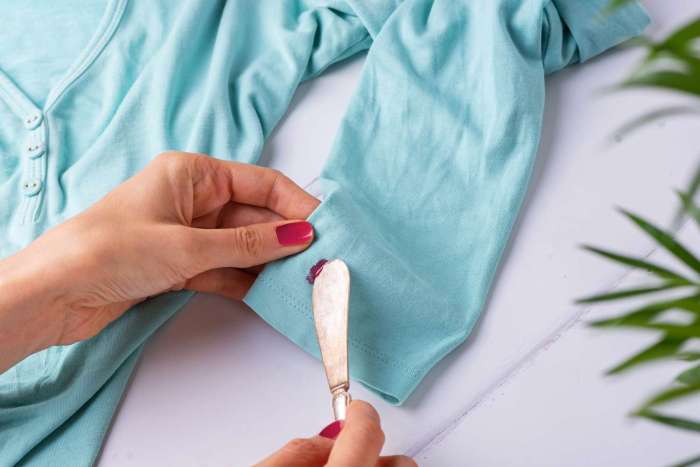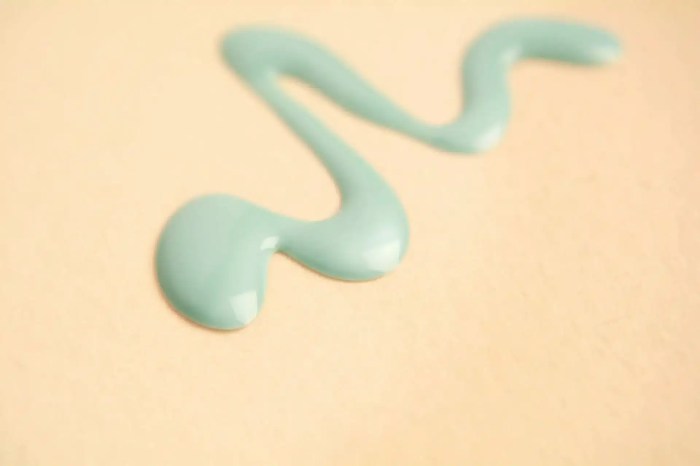Does Nail Polish Come Out of Clothes?
Understanding Nail Polish Stains on Clothes
Does nail polish come out of clothes – Spilled nail polish on your favorite shirt? Don’t panic! This guide provides a comprehensive approach to removing nail polish stains from various fabrics, from common household remedies to professional cleaning methods. Understanding the type of nail polish, the fabric, and acting quickly are key to successful stain removal.
Types of Nail Polish and Their Removal Difficulty
Different nail polish types present varying challenges for removal. Regular nail polish, typically composed of solvents, resins, and pigments, is generally easier to remove than more durable formulas. Acrylic and gel polishes, known for their longer-lasting properties, require more aggressive methods due to their chemical bonding with the nail and, consequently, the fabric.
The chemical composition directly impacts stain removal. Solvents in regular nail polish are more easily broken down by common cleaning agents, while the polymers in acrylic and gel polishes require stronger solvents or professional treatment.
| Fabric Type | Susceptibility to Regular Nail Polish | Susceptibility to Acrylic/Gel Polish | Notes |
|---|---|---|---|
| Cotton | Medium | High | Absorbent, but generally durable. |
| Silk | High | Very High | Delicate, requires gentle treatment. |
| Wool | Medium-High | High | Can be damaged by harsh chemicals. |
| Polyester | Low | Medium | Synthetic, less absorbent. |
Immediate Actions After a Spill

Source: americantwoshot.com
Time is of the essence when dealing with nail polish spills. Immediate action significantly improves the chances of successful removal. The faster you address the stain, the less time the polish has to set and penetrate the fabric fibers.
- Blot (don’t rub!) the excess polish with a clean cloth or paper towel.
- Prevent further spreading by avoiding excessive rubbing or pressure.
- Act swiftly; the longer the polish remains, the harder it becomes to remove.
Home Remedies for Nail Polish Removal
Several common household items can effectively tackle nail polish stains. However, always test any cleaning solution on an inconspicuous area of the garment first to check for colorfastness and fabric damage.
- Nail Polish Remover (Acetone-based): Highly effective, especially for regular nail polish. Apply directly to the stain, blot gently, and launder as usual. Caution: Acetone can damage some fabrics, so test first.
- Rubbing Alcohol (Isopropyl Alcohol): A gentler alternative to acetone, suitable for delicate fabrics. Apply, blot, and launder. May require multiple applications.
- Dish Soap: A mild detergent that can help lift the stain. Apply, gently rub, and launder. Best for fresh stains.
Professional Cleaning Methods
Professional dry cleaning offers a reliable solution for stubborn or delicate fabrics. Dry cleaners have specialized solvents and techniques for removing various stains, including nail polish.
- Advantages: Expertise, specialized equipment, high success rate for difficult stains.
- Disadvantages: Cost, potential for damage (though rare with reputable cleaners).
- Cost-effectiveness: Home remedies are generally cheaper, but professional cleaning may be more cost-effective for valuable or delicate garments.
Preventing Future Stains
Preventing nail polish stains is far easier than removing them. Adopting preventative measures can save you time, effort, and potential damage to your clothes.
- Careful Application: Use a thin coat of polish and work in a well-ventilated area.
- Protective Clothing: Wear old clothes or a smock while painting your nails.
- Cleanup Strategies: Clean up any spills immediately.
- Storage: Store nail polish in a cool, dry place, away from direct sunlight and heat.
Specific Fabric Considerations, Does nail polish come out of clothes

Source: thespruce.com
Delicate fabrics like silk and lace require extra care when removing nail polish stains. Harsh chemicals can easily damage these materials, necessitating gentler methods.
For silk or lace, try a very diluted solution of mild dish soap and water, blotting gently. For heavier fabrics like cotton or wool, you may be able to use more aggressive methods like acetone (always test first!). A visual guide would show the gentle dabbing motion for delicate fabrics versus the more direct application for durable ones.
The Role of Stain Age and Set Time

Source: hellobetty.co
The age of a nail polish stain significantly impacts its removability. Fresh stains are far easier to remove than those that have had time to set and penetrate the fabric fibers. Quick action is crucial; the longer the polish remains, the more likely it is to become a permanent stain. The drying time directly affects how deeply the polish penetrates the fibers.
FAQ Explained: Does Nail Polish Come Out Of Clothes
Can I use bleach to remove nail polish?
Generally, no. Bleach can damage many fabrics and may set the stain. It’s best to avoid bleach unless you’re absolutely certain it’s safe for the specific fabric.
Spilled nail polish on your favorite shirt? It’s a common mishap, but thankfully, there are ways to tackle it. The effectiveness of removal often depends on the type of polish; understanding this is key, especially since it relates to whether regular nail polish remover, unlike what you’d find out by checking does nail polish remover take off gel polish , is sufficient for the job.
Getting stubborn stains out might require a different approach than a simple wipe, so knowing your polish type is crucial for successful stain removal.
What’s the best way to prevent nail polish stains?
Careful application, using a protective layer (like newspaper) on your work surface, and wearing old clothes while painting nails are all effective preventive measures.
How long should I wait before attempting to remove a nail polish stain?
The sooner you address the stain, the better your chances of complete removal. Don’t let it dry completely.
Is it always necessary to pre-treat a nail polish stain before washing?
Pre-treatment is recommended, especially for stubborn stains or delicate fabrics. It helps break down the stain and improves the effectiveness of the washing process.
















